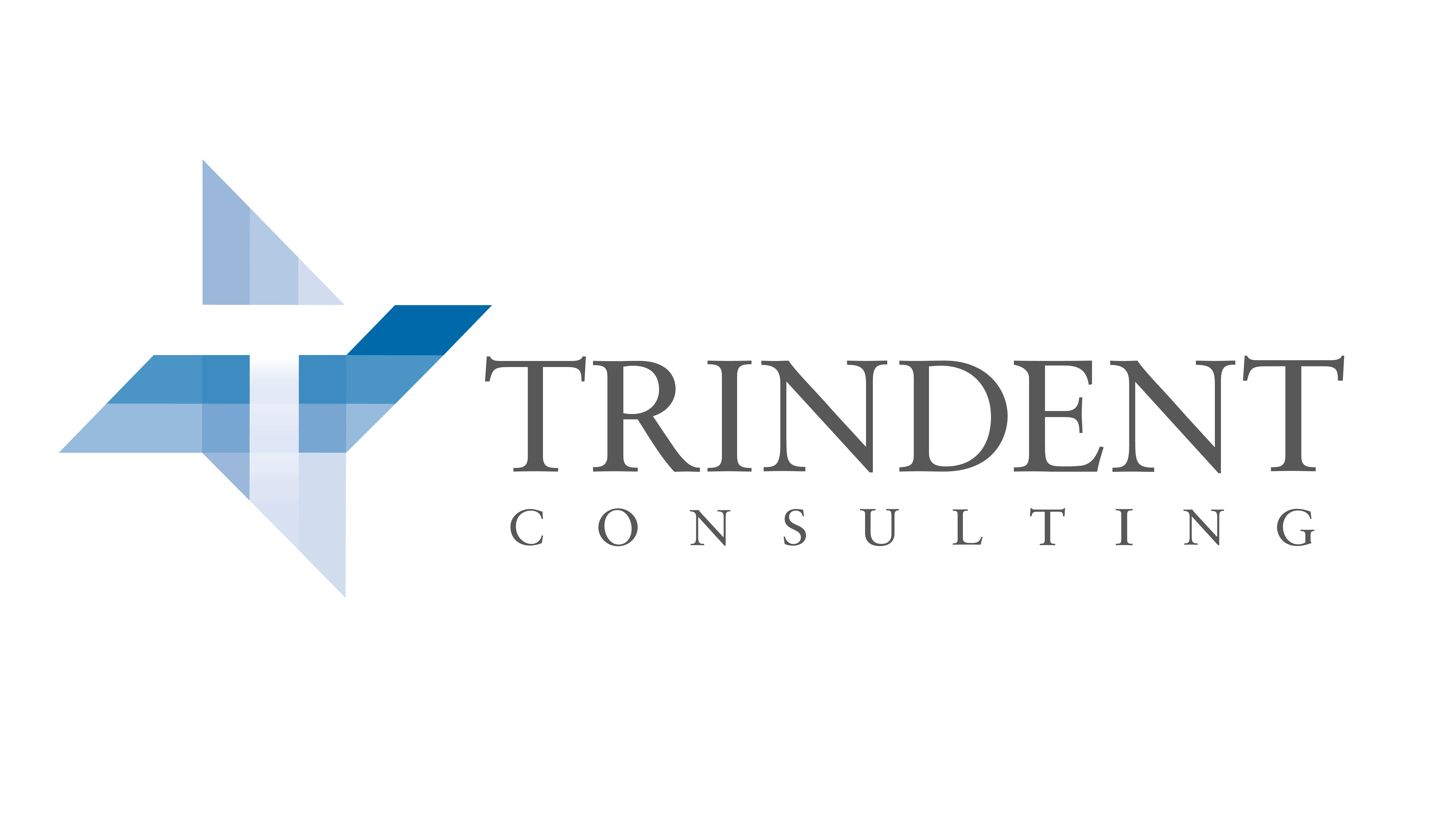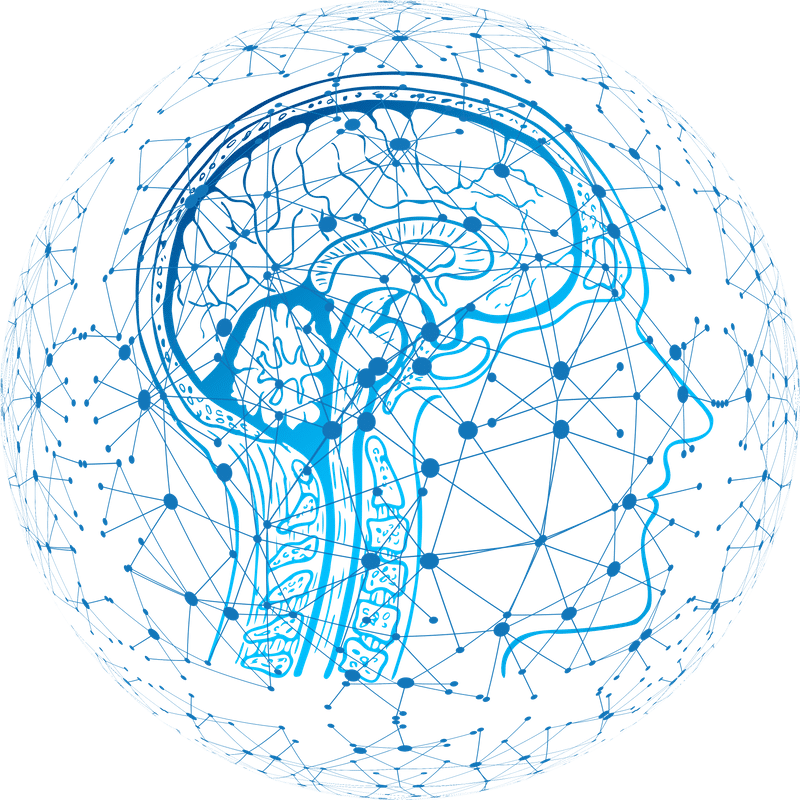Heuristics: Why Intelligent Managers Make Mistakes
As an experiment, a cohort of MBA students was given a math test with difficulty at about the 5th-grade level. The test was administered online, designed as an open book multiple-choice, and no time limit was imposed. All possible conditions were put in place to make passing the test easy. The results, revealed at the beginning of the next class, came as a big surprise – and a considerable blow to the self-esteem of the A-type personalities enrolled in this highly respected graduate management program. The overall class average on the test was 33%.
The results did not surprise the professor, however. When other MBA and Ph.D. students were given a similar test, their scores were comparable. The secret, the professor explained to his class, was in the design of the test and framing of the questions. It was deliberately fashioned to exploit the natural cognitive bias we all have towards heuristics, and it invariably found that target despite the intelligence and education levels of the people taking the test.
It should be noted that no information was withheld on the test, and no unconventional assumptions needed to be made, so with careful reading and accurate calculations, it would have been possible to score 100%. What ultimately led to graduate-level students failing was a design that allowed heuristics to undermine both factors. The multiple-choice answers were constructed in a way to make the wrong ones seem more obvious than the right ones unless they were carefully thought through. And the demanding schedule of the MBA program created a time crunch issue for the students, so they voluntarily by-passed time-consuming meticulous calculations in favor of quick but erroneous approximations.
These biases towards heuristics
influence the managerial world and organizational governance.
Application to the Management World
The disconcerting reality about human biases is that they thrive in precisely the environment that most managers and executives function in daily. When time is scarce, the natural default to heuristics is amplified. Management often faces complex problems that require non-linear solutions, but without adequate capacity or resources, even the most intelligent and competent managers cannot avoid making mental shortcuts.
Two common biases that managers fall victim to is the Status Quo Trap, where decisions that favor existing conditions are intrinsically valued without sufficient introspection, and the Sunk-Cost Trap, which favors choices that are in line with past decisions, even if those were not the best ones. Both of these biases are predicated on the same heuristic - it’s simpler to make small cosmetic changes than complex and significant ones.
Avoiding the Traps
This is where business management consulting services come in. What an external and experienced perspective can uncover can be surprising and can help managers learn how to make the deliberate and thoughtful choices their organizations need.
Click here to read more about the systemic approach to organizational and behavioral change that is a part of every Trindent Consulting engagement.
What Came First, The New Application or The Follow-Up?

As an insurance company leader, do you ever
wonder if your new business department spends a disproportionate amount of time
doing follow-ups on existing customer applications rather than focusing on processing
new ones?
This imbalance is a common pain point Trindent Consulting has observed in their engagements with large insurance firms. Client data shows us there is a clear-cut area of opportunity in this imbalance, as new business departments are spending excessive amounts of time handling follow-ups – considered to be non-value work – instead of processing new applications.
Using the 2nd Lean principle (Mapping
the Value Stream), an insurance company leader should be asking three questions
to determine what the optimal amount of time is to spend on a non-value
activity like follow-ups:
- “Would the customer pay for
this activity?” - “Would more of this activity be
good for the firm?” - “Does this activity help move a
process along?”
But because the answers are not black and
white, insurance companies often allow themselves to be lenient towards non-value
activities they see as necessary, such as follow-ups.
What’s the Issue with Follow-Ups?
In a perfect consulting world, follows-ups wouldn’t
exist because they are essentially re-work, the embodiment of inefficiency. Every new application would be submitted only
after it was completed correctly and in its entirety, and could be reviewed,
underwritten and sent back to the right agent with a rating and price in a
single cycle.
In reality however, follow-ups are an unavoidable part of the insurance application process and will never be eliminated because human error on the part of applicants cannot be controlled. Follow-ups occur when additional information, or corrections to existing information, is needed to complete the application process. In the insurance industry, it’s an acceptable practice to go through one or two, or sometimes even three, follow-ups for a single application. However, when the follow-up count reaches four, it becomes a problem. The repeated follow-ups cause applications to repeatedly cycle through and clog up the system and create an imbalance in the volume of follow-ups versus new application processing.
What Can You Do?
In order to solve this imbalance, it’s
important to set proper parameters to reduce the rate at which follow-ups occur. This requires a deep dive into call center data
in order to understand why follows-up occur, and to determine what can be done
to reduce them.
Through questions like these, call centers can begin to understand where to focus their process improvement efforts:
- Which form or section of the
form causes the most problems? Is the
problematic form or section of the form confusing? Can it be easily changed? - Is there a specific agent who
is a repeat offender? Can guidance or
incentives be provided to change their behaviour? - Are we internally too stringent
on some of the forms? Are we letting
the perfect get in the way of the good? - Are staff adequately trained to
know what really requires a follow-up and what doesn’t?
The answers to these questions can become a
guide for call center leaders to restore balance to value-add versus non
value-add work, and to make their teams more productive.
Follow-ups are only one of many
inefficiencies that insurance companies face.
Trindent’s methodology for call center improvements is a tested and
proven systematic approach to extract, analyze and implement solutions to
processes, systems and behaviors to drive sustainable results.
Click here to learn more about how Trindent can develop a solution to drive your call centers’ efficiency.
Hydrocarbon Loss: Identifying Opportunities
In
refineries, an Operating Expense hides in plain sight – Hydrocarbon Loss.
Hydrocarbon
Loss occurs daily in refinery operations because improper systems, processes,
and behaviours are in place. This is a preventable
loss that often costs individual refineries millions of dollars per year. Best-in-class targets are under 0.25% loss,
while under 0.5% loss is considered an achievable target for the average
refinery. If your refinery is performing worse than these targets or, worse, is
operating in the dark, don’t worry, a solution exists – a Hydrocarbon Loss
Control Program.
A
Hydrocarbon Loss Control Program is a set of measures that can be implemented
to systematically reduce refinery Hydrocarbon Loss. An effective Loss Control Program will
identify all refinery fence line inputs and outputs to identify known losses
and potential causes of unknown losses. Using a structured approach, the Loss
Control Program can then become more granular and identify process unit inputs,
outputs, and sources of loss.
To
have a successful Loss Control Program that can identify opportunities, it is
important to understand the root causes of Hydrocarbon Loss. It often occurs at custody transfer points -
the measurement points, where possession (custody) of hydrocarbons changes
hands. Typically, these are interface points between the refinery and
pipelines, rail cars, trucks, and vessels. At these custody transfer points
there are three common causes of loss:
- Sediment
and Water Measurement Losses
- Crude is necessary for the refinery’s operations, but the sediment and water
intrusions that often exist in crude are not. Often, the refinery is paying for
these intrusions without realizing the magnitude of these intrusions or of the
associated cost. - Inaccurate
Measurements –
Measurements are used to track the volume and/or mass of hydrocarbons
throughout the value chain, inaccurate measurements result in false data and
prevent data-driven action and solutions. At point-of-sale custody transfer
points, incorrect measurements can result in financial losses, or penalties if
the quantity or quality is different than contracted to the buyer. - Retains
– When offloading
rail cars, trucks, and barges not all the product is extractable or the
opportunity cost of extraction is greater than the value of extraction. The
amount that remains onboard is often paid for, but not accounted for in mass
balance programs.
To
prevent these losses, Trindent’s team of Hydrocarbon Loss Consultants can implement
an effective and efficient Loss Control Program at your refinery and help you
on your journey to best-in-class targets. To support Loss Control Program
implementation, we have customizable custody transfer tools that are ready to
be tailored to your site and we have training material available to develop and
empower your employees to ensure results are sustained.
To learn more about how Trindent can make it happen in your company, reach out to our team on LinkedIn or through our Contact Us page.
The author of this blog, James Greey is a senior consultant at Trindent.
Understanding Gasoline Quality Giveaway

At
a refinery, gasoline is produced to regulatory or customer demanded
specifications, and exceeding these specifications is considered gasoline quality giveaway, costing individual
refineries millions of dollars a year.
What
is gasoline quality giveaway? Let’s say a gas station selling premium
gasoline as 91 octane – this is a specification. If a refinery produces a 91.5 octane product,
the refinery is giving away 0.5 octane. In
addition to octane, giveaway also exists for other characteristics of gasoline
such as RVP, T50, and TVL (also known as V/L). This giveaway is often not a
one-off or accidental occurrence but is systemic, and it exists for most
gasoline produced at the refinery.
Structural Versus Non-Structural Giveaway
Structural
giveaway is pre-determined
giveaway caused by constraints like tankage limitations, specification restrictions,
inventory limitations, measurement precision, and octane length/hydrogen demand. Structural giveaway often cannot be avoided
or requires additional capital expenditure or CAPEX
to prevent. Fortunately, structural
giveaway only accounts for approximately 70% of the giveaway at a refinery so
there is still an opportunity to save millions of dollars a year without CAPEX.
Non-structural giveaway is giveaway that is preventable with system, process, and behavioural changes. These changes do not require CAPEX and can be implemented in approximately six months. At Trindent, we focus on reducing non-structural giveaway by implementing scheduling, operations, and laboratory improvements:
- Scheduling – During scheduling, blends are planned based on several factors, and gasoline recipes are created. At this stage, increasing confidence in blend predictions allows the planner to reduce buffers and ultimately reduce giveaway. Trindent works with refineries to improve recipe design by implementing butane planning and management tools, developing statistical based tools for optimizing recipes, validating ethanol uplift models, implementing blend prediction accuracy best practices, and tracking giveaway and other relevant metrics weekly.
- Operations – Once a recipe is complete, it is sent to operations to be blended. Blend operators execute the recipe and control the components entering the blend. Trindent optimizes execution of blend recipes by reducing blend operator variability and implementing blend execution best practices. We reduce variability by providing your workers with enhanced training, standardizing blend adjustments based on blend component properties, creating communication feedback loops, and implementing dashboards that track key performance indicators (KPIs). By reducing blend variability and empowering your workers, we also reduce octane and volatility giveaway.
- Laboratory
– The laboratory becomes involved when start-up or mid-blend samples are taken
and after a blend is complete to validate the blend properties and certify the
blend. Trindent’s team of Quality Giveaway Consultants provides your
laboratory with the tools it needs to increase instrument accuracy. To ensure
analyzer excellence, Preventative Maintenance [note to draft: Link to Refinery Maintenance Best Practices
blog] is used to prevent failures, while control charts are used to monitor,
troubleshoot, and resolve instrument readings.
Refineries
often believe that reducing gasoline quality giveaway is impossible without CAPEX;
however, our experience at more than twenty different refineries has proven
that a zero CAPEX solution exists.
Understanding that quality giveaway is preventable without CAPEX is the first step to reducing giveaway. The second step is understanding what quality targets are right for your refinery and to look for the signs of giveaway.
To learn more about how Trindent can make it happen in your company, reach out to our team on LinkedIn or through our Contact Us page.
Motivating Your Staff to Greatness
"Leadership is the art of getting someone else to do something you want done because he wants to do it."
Dwight Eisenhower
How motivated a person is directly impacts
their output, both from a quality and quantity perspective. It’s therefore essential that an
organization’s management team not only recognizes the critical role motivation
plays in workplace productivity, but actively seeks out potential sources of
motivation to keep their staff engaged and eager.
Endless research has been conducted in the
field of motivation at all functional levels – biological, psychological, and
sociocultural. At its most basic level
it exists in every task that we undertake every day, whether we are aware of it
or not. But not all motivation is the
same, and not all motivation produces the same result.
Extrinsic Motivation
Extrinsic, or external, sources of motivation are obvious ones, especially in the context of business as they generally align with what is viewed as success in the workplace. In this context, extrinsic motivation tends to be easily measurable, and is comprised of things like compensation, awards, and benefits.
Extrinsic motivation is generally driven by
factors like necessity, greed, or societal perception, so it’s less personal, and
therefore viewed as less effective. But
because of how easily its rewards fit into business, societal, and economic frameworks, it
requires little effort by management to define and quantify, and consequently it’s
the type that companies tend to rely on the most to motivate their workforce.
Intrinsic Motivation
Intrinsic, or internal, sources of
motivation can be more complex to identify as they come from a person’s individual
set of values and
drivers. They require management to
review and react to an employees’ behavior, and to take notice of which tasks
interest and excite them. What the
employees present with pride rather than detachment is an important indicator of
what they feel a personal connection to.
Intrinsic motivation is significantly more
difficult to identify and implement. It
takes time, patience and insight for a manager to understand, and cannot be
quantified the way extrinsic motivation can be.
However, because intrinsic motivation is driven by internal values and
connections rather than external ones, it’s significantly more effective.
Although more time consuming and effort
filled, having this insight on intrinsic motivators allows managers to tailor
tasks and create personal challenges for employees to give them the right impetus
to excel.
Introjected Motivation – A Hidden Risk
A subset of intrinsic motivation –
introjected motivation – manifests itself as a sense of guilt or fear of
consequence if, for example, work is not completed or not up to standard. This is a powerful driver of most human
behavior, especially in people with a strong sense of ethics.
However, this guilt and fear can create
negative connections for employees to their work environment or the culture of their company. To avoid the risk of introjected motivation
crossing the line into the negative, management needs to be conscious of
managing expectations and being clear about consequences, but without pressing
the issue more than necessary. If not
managed properly, introjected motivation can become detrimental, and is a risk
that managers need to be aware of.
Knowing Your Employees
If you can understand what motivates your employees, you can manage them more effectively, increase their productivity, and drive the success of your business. But how you motive them is essential. Extrinsic motivators are obvious and easy, but in taking the time to find out what intrinsically drives your employees to want to excel, you can manage them to greatness. The investment might be greater, but so will the return.
The Benefits of Capacity Planning
One of many advantages of an engagement
with Trindent Consulting is the development of a capacity planning model called
the Area Workload Assessment (AWA), which Trindent custom-builds and calibrates
for each client and each department within the scope of the client engagement.
Importantly, this is not a single-use tool developed
for the duration of its engagement.
Instead, it’s a perpetual tool that every manager will be given to use
for staffing projections going forward.
What Is a Capacity Planning Model?
Capacity planning plays a key role in the production lifecycle of an organization. It’s “the process of determining the production capacity needed by an organization to meet changing demands for its products”. A capacity planning model, such as Trindent’s AWA is the tool that allows this critical planning function to take place.
The model takes into account factors like what activities are involved in the process, the best repeatable time to complete each activity, and a historical production volume. When these main variables are added up, plus a few others added to account for shrinkage, the model calculates what the optimal staffing resource level should be. A recent example comes from a Trindent engagement at a large insurance firm, where the AWA was deployed to determine how many agents were needed to underwrite a given amount of life insurance policies, while maintaining a certain level of service.
The model is dynamic and can be used to
compare current and future state capacity.
A great way to use the AWA is to input forecasted sales volumes along with
current timings in order to project a future state for the capacity required to
maintain operations, which allows an organization to stay ahead of the curve.
The Power – and Benefits – of Capacity
Planning
Wages are one of the largest expenses
incurred by any business, so planning for optimal staffing levels to ensure
proper delivery of goods or services without overpaying for underutilized resources
is a key activity to driving profitability. Trindent has observed that without proper
goals, targets, and insight on production data, many companies are overstaffing
at a rate higher than their growth, putting a huge strain on the cashflow needed
to cover on wages.
It is, however, equally important to not
understaff in order to avoid two potential pitfalls. The first is jeopardizing the
ability to meet output targets and maintain service levels, which leads to
reputational risk both with clients and within the industry. The second is the risk of employee burnout. By stretching current staff to maintain a
higher than planned volume for prolong period of time can cause increased
stress and decreased morale, leading to absenteeism and turnover.
By equipping managers with the AWA, a
powerful capacity planning tool, Trindent gives them the ability to accurately
utilize current staffing, and keep the business operating optimally.
Click here to read more about how Trindent can assist you to make the most of your capacity planning.
The Human Dimension of Organizational Change
The concept of change means something
is becoming different. When your organization starts initiatives to improve performance, address key issues, or drive new opportunities, change – becoming
different – is required in processes, methods, technology, and organizational
structures.
In any undertaking of organizational
change, people within that organization must change first – acquire new
knowledge, take on new tasks, modify habits, changes attitudes, adopt new
values – because it’s the behaviour of people which will ultimately determine
what changes can be successfully made and what benefits will be realized. The human element of organizational change is
a key factor in effective change management (link “effective change
management in a nutshell” blog). Individual employees
need to be successful in their personal transitions in order for the organizational
transition to succeed.
But how do people change? Let’s look at the relationship between change
in people and organizations.
Change in People
What is the process that brings about behavioural and organizational change? Different people have different levels of willingness and ability to change and everyone takes different amounts of time to adapt. But regardless of these factors, change takes place in the same order:
- Knowledge - acquiring information about the change and understanding the reasoning for it always comes first. Generally, because this step is rational, it’s the easiest and takes the least amount of time.
- Attitude – accepting the need for change both rationally and emotionally. The second step is harder and takes longer because emotion is now involved.
- Individual Behaviour – once the attitude towards change is modified, behavior comes next. This is considerably harder and takes longer because it fights habit and subconscious conduct.
- Organizational Behaviour – the culmination of the process, it takes the most time and effort because it’s dependent on numerous members of the organization successfully completing the first three steps.
While the
first step is generally easy, the second and third steps can become roadblocks
to successful implementation because it’s here that resistance to change manifests
itself.
Resistance to Change
Why does change frighten people? Resistance to change is determined by
character and coloured by personal experience. But whatever the reason for the fear– lack of
conviction, fear of the unknown, habit, lack of trust, or animus for the person
promoting change – there are methodologies that can limit resistance in the early
stages to make the path to organizational changes easier.
The use of two Lean methodologies – Kanban and Kaizen – are a good way to get started.
Kanban is a visual method for managing work as it flows through a
process. It invites input from all
levels of the organization to help identify and implement continuous improvements.
The interactive format allows for early engagement and gives employees a sense
of ownership of the improvement process, thus promoting buy-in and lowering
resistance to the impending change.
Kaizen also involves employees in identifying and implementing
change, but focuses on small continuous improvements. As with Kanban, involving staff creates
ownership in the method to drive buy-in – but because the changes in Kaizen are
small and incremental, it also lowers resistance to change by reducing how
daunting the unknown seems.
Individual Change Management
While it’s a natural reaction to resist change, being able
to successfully adapt to it is necessary in improvement implementations. However, this ability requires an effective
understanding of how change takes place on the individual level throughout each
of the change management
phases. The human dimension is
the foundation for organizational change – therefore, success in individual
change is required to truly succeed on the
organizational level.
Trindent recognizes the role individuals play in effective
and sustainable change. Click
here to learn more about our
unique approach to successful implementation.
Refinery Blending Operations: Using Advanced Data Analytics To Improve Performance

Recovering fuel demands and record high prices have led to an increase in refining margins for the first time since the Covid-19 pandemic.
This industry is plagued with archaic, siloed systems and the recent attrition due to global pandemic has led to processes inefficiencies and knowledge gaps in several areas of the refining business. Currently more than ever communication and data analytics are proving to be key to success.
The Issue
Data is stored in several different databases - Orion, LIMS, Pi are examples of a few. These databases store data at different frequencies, in addition individuals keep spreadsheets to track specific metrics. Data in spread sheets is prone to corruption and requires several steps to populate. The data not bein easy to access and lack of transparency are all pain points of the industry.
Data Analytics
An important tool for gaining business insights and providing tailored responses to customers, "Data Analytics" has become increasingly important for organizations and has evolved and broadened over time, providing many benefits. With the development of Big Data, Data Warehouses, the Cloud, and a variety of software and hardware, Data Analytics has evolved, significantly. The term “Business Intelligence” is ideal to describe decision-making based on data technologies.
Connecting the Dots
Various analytic tools on the market today are both powerful and cost effective. Creating interactive dashboards connected to live databases helps reduce manual data manipulation and provides quicker access to information to make data-driven decisions. In the blending process for example analytic software can help bridge the gap between:
- Components used
- Blending operations
- Lab data
- Crew performance
- Giveaway results
Operationalizing for Action
Operationalization of analytics requires four facets, decision making, organizational, application and business. Decision making is the most important, the dashboards developed helps streamline the process and pre-empt potential issues rather than fighting fires. Being able to see historic performance versus live performance is an invaluable tool in early identification of a potential problem.
Taking action needs to be the corner
stone of analytics. What good is the analysis if you don’t act on it? Hence it
is important to imbed the analytics into the existing process.
The business facet ensures there is
agreement on the tools (dashboards) and their value. Understanding how the discissions
influenced by the analysis are expected to impact results.
The Organization facet ensures that
all parties roles and responsibilities are identified.
The application facet defines the
process in witch the new analytics will be used as well as system requirements,
(databases, visual requirements etc..)
Challenges
Although companies and management are
in favor of advanced analytics to drive business decisions many of the issues
arise from people’s behaviors and processes rather than technology. IT
restrictions, political agendas and governance tend to be the largest barriers
to progress.
Solution and Results
Starting with small pilot projects owned by the business to prove benefits before pushing to a wider audience, focus on people behavior and process first, to get executive buy-in and encourage discussions within the organization. Education and training are vital to ensure sustainability. Finally, communication plays a very important role in the success of new analytic projects. Using communications demos and actively engaging the business, having BI meetings with stakeholders and publicizing results help to achieve acceptance. Changing process, systems and behaviors are the pillars to effect positive change and sustainability.
Ways To Build An Analyzer Program That Works!

In the past decade, a lot of our Oil and Gas clients have invested heavily in online analyzers as an effective technology to monitor their operation’s health status on a real-time basis. However, through our Assessments and Engagements, we noticed that a lot of these analyzers were underutilized towards their full potential. On average, an analyzer’s effectiveness is only around 50 – 80% pre-engagement. To build an effective analyzer program, an Oil and Gas operator should approach the opportunity using the Trindent methodology:
Process
An appropriate process must be deployed to calibrate, maintain, and model our online analyzers. Commonly, we observed two gaps in the analyzer program when it comes to process management. The first one is that the initial training from the analyzer vendor is the only knowledge transfer or development that occurred. While there is comprehensive user instruction (which is usually hundreds of pages) and plenty of online resources, the analyzer group usually relies on the initial information only and misses out on more advanced features that their analyzers can offer. The second common mistake is that the initial vendor provides a default setting for the client as a one-fit-all solution - but there is never subsequent customization from the user to tailor the analyzer settings towards the actual operating condition of the analyzers. This can lead to missing opportunities to provide more accurate data.
System
As a surprise, a lot of the time there is no monitoring system in place for the online analyzers. The performance of the online analyzers is merely determined by subjective opinions and experiences by one or a few individuals, without the utilization of any data analytic framework or pre-determined control limits. At Trindent, we successfully supported our clients in developing required control charts following the standard Western Electric SQC rules – to help them accurately health check their analyzer’s performance.
Behavior
While the analyzers can be the most advanced version in the industry, they are likely to generate little value without the correct maintenance behavior. We usually found two common opportunities during our Assessments/Engagements. One is the unclear roles and responsibility for the analyzer maintenance. While a lot of organizations consider the maintenance of the analyzers as the primary focus and assign resources to it, a common gap is accuracy ownership. If the accuracy of the analyzer is not owned by anyone – their performance will most definitely erode over time. The other gap is that even if the duties around the analyzer are well-defined, the people assigned to those tasks are often under-trained to succeed in their job. A skill matrix or proper training program can quickly close the gap, but that is also often missing.
In the past few years, Trindent has been helping our Oil and Gas clients in improving their analyzer performance successfully around the world. Please see our success stories here.
The author of this blog, Kai Y. Wan is an Engagement Manager at Trindent Consulting.
The Silver Lining to Working From Home

With the COVID-19 outbreak, most offices across the globe are left unoccupied as workers flee to their work from home spaces and begin working remotely for an unknown amount of time. Fortunately, a lot of corporate services are well equipped to run remotely, with conference calls, work video calls, and touchpoints able to continue as normal. However, there are many aspects of the regular office space that the coming months will change (maybe for the better) including your schedule, your social life, your commute, and even how you drink your morning coffee.
1. Use your new schedule to your advantage
Although it is recommended to maintain your regular schedule while working from home by beginning at 9 am, ending work at 5 pm and taking an hour's lunch in between, there are certain changes that will come to your daily schedule while working from home, that are far from bad. Some of these changes include the sleep that you gain back from not having to commute, as well as the time you get back from skipping the socializing at the office coffee machine.
2. Learn New Productivity & Time Management Skills
Over the next weeks of working from home, this will be the time to stop and learn how to build productivity and time management skills, rather than letting your current working habits slide with your flexible work schedule. During this time, as a consultant, I am taking time to complete my Lean Six Sigma Course, while my co-workers are working through Project Management courses and self-taught VBA for Excel and Tableau in order to bring new skills to the client site in the future.
3. Find a new substitute for your morning commute
As a consultant based in Toronto, I have had my share of both commuting to Toronto from Hamilton (over an hour each way) as well as flying out on Sundays to the client site. While working from home, I have found more time without my commute to start work earlier, eat breakfast, get to my dinner on time, get my workout in or even finish my personal administrative work and house cleaning. Although many employees enjoy the routine of their morning commute, take this opportunity while working from home to use the time from your commute to catch up on your personal to-do list or build new healthy habits. Some items that I have been working on include my personal budgeting and accounting templates as well as cleaning up my work laptop to be organized and ready for a busy season in the future.
4. Reconnect with forgotten friends
It is obvious that social distancing will have a negative impact on our social lives in the upcoming weeks. While employees are told to stay home from social gatherings, the office dynamic that lacks while working at home is one that most will miss. However, while your work social life will lack for the next weeks, working from home presents the opportunity to catch up with old friends that you have not connected within a long time. At no other point in our lives, will everyone in the world be confined to their living space simultaneously, battling the same enemy? To make up for a loss of social interactions from work, take time to FaceTime old college roommates over your cup of coffee, distant family members and your friends that you met on last year's vacation. Take time from your work relationships and uncover some of the relationships that you have missed for so long.
5. Enjoy your morning coffee
Whether it’s Starbucks or Tim Horton’s, most people fall victim to grabbing a morning coffee either on their way to work or throughout the day with co-workers. With most coffee shops closing for the upcoming weeks, it is a great opportunity to realize the benefits of waking up in the morning, making your coffee yourself and enjoying it before you start your day. This new trick can prepare you to practice better choices when you go back into the office later on. It is amazing the cost savings from not spending money on coffee every morning that you may realize as well as the time you get back by not having to make an extra stop on your way to the office. If you love the taste of your brewer, you can even pick up Tim Horton’s or Starbuck’s ground coffee to keep yourself in your normal routine at a fraction of the cost. This might also be the time to indulge in healthy eating habits such as making and eating breakfast as well as bringing lunch to the client site, rather than buying lunch due to convenience.
This blog's author Lauren Soave is a consultant at Trindent Consulting







